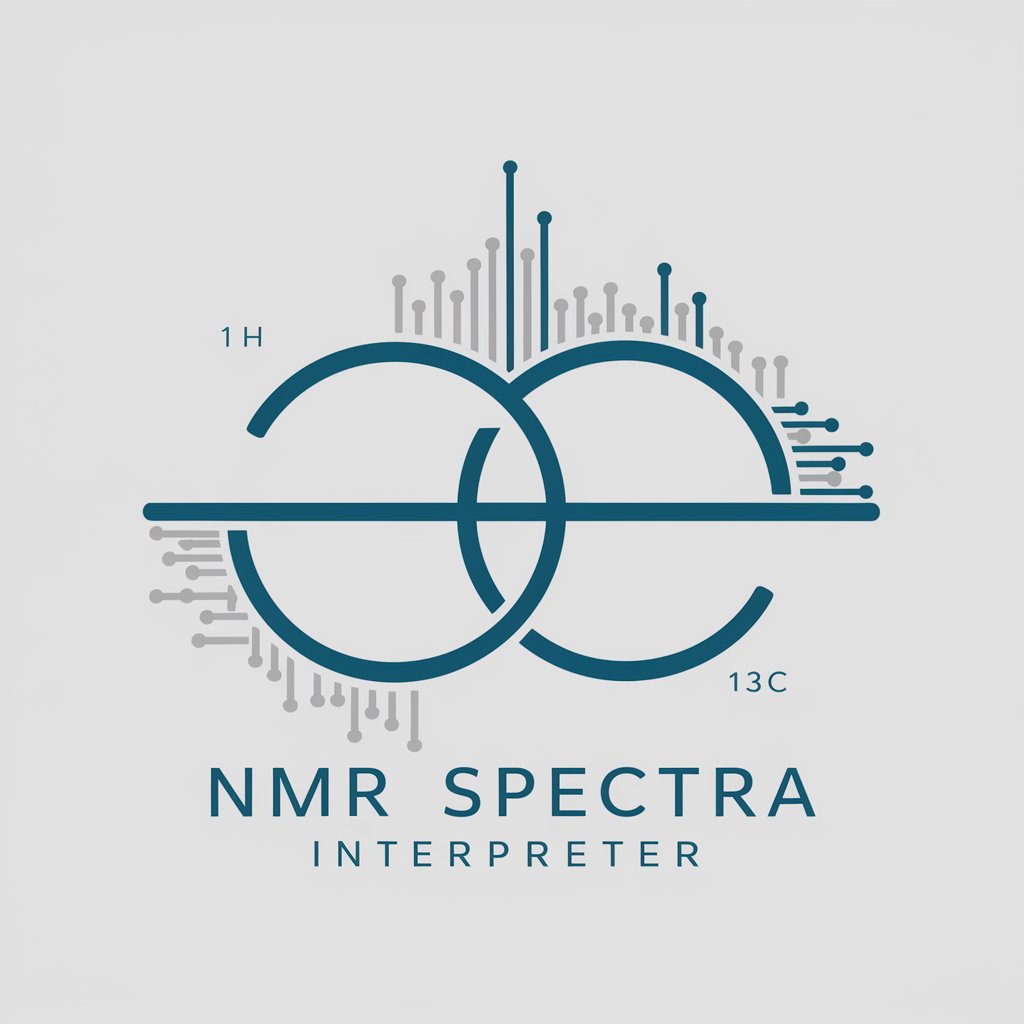NMR Spectra Interpreter - NMR Spectra Analysis and Interpretation

Welcome to the NMR Spectra Interpreter!
Deciphering Molecules with AI-Powered Precision
Analyze the chemical shifts observed in this 1H NMR spectrum.
Identify the coupling constants and what they suggest about the molecular structure.
Explain the significance of the multiplicity patterns in this 13C NMR spectrum.
Interpret the signals observed and provide possible structural insights.
Get Embed Code
Introduction to NMR Spectra Interpreter
NMR Spectra Interpreter is a specialized tool designed to aid in the interpretation of NMR (Nuclear Magnetic Resonance) spectra, specifically focusing on 1H (proton) and 13C (carbon-13) spectra. Its primary function is to assist users in identifying and naming signals within an NMR spectrum, offering insights into the possible molecular structures these signals represent. By analyzing chemical shifts, coupling constants, and integration values, the interpreter provides valuable guidance in deducing the molecular framework and functional groups present in a sample. For example, it can distinguish between the signals of a methyl group attached to an oxygen (indicating an ether or alcohol) versus a methyl group attached to a carbonyl (indicating a ketone or aldehyde), based on their chemical shift values. The design purpose behind this tool is to streamline the process of NMR data analysis, making it accessible to both beginners and experts in the field, and to support educational, research, and industrial applications by providing clear, precise interpretations. Powered by ChatGPT-4o。

Main Functions of NMR Spectra Interpreter
Signal Identification and Analysis
Example
Identifying multiplet patterns and chemical shifts to deduce molecular fragments.
Scenario
In an educational setting, a student uploads a 1H NMR spectrum and receives a breakdown of each signal, including its chemical shift, multiplicity, and what type of hydrogen (e.g., methyl, methylene, aromatic) it represents. This aids in their understanding of how molecular structure influences NMR signals.
Molecular Structure Suggestions
Example
Suggesting possible structures based on NMR data.
Scenario
A researcher in organic chemistry is trying to identify an unknown compound. By inputting the 1H and 13C NMR spectra into the interpreter, they receive suggestions for possible structures that match the observed data, helping to narrow down potential candidates for further investigation.
Educational Support
Example
Providing explanations and tutorials on interpreting NMR spectra.
Scenario
An undergraduate chemistry class uses the interpreter to supplement their learning. After conducting a lab experiment, students use the tool to compare their theoretical understanding with actual NMR spectra, enhancing their practical skills in spectroscopy.
Ideal Users of NMR Spectra Interpreter Services
Students and Educators
Students learning about organic chemistry and NMR spectroscopy benefit from interactive, real-time feedback on spectra interpretation, enhancing their understanding and skills. Educators can use the tool to create engaging teaching materials and laboratory exercises.
Research Scientists and Chemists
Professionals involved in chemical research, pharmaceutical development, or quality control rely on accurate NMR interpretation for structure elucidation and verification. The interpreter aids in the rapid analysis of complex spectra, facilitating research and development processes.
Industry Professionals
Individuals in the chemical, pharmaceutical, and materials industries use the interpreter to analyze raw materials, intermediates, and products. It supports quality assurance and regulatory compliance by providing detailed structural information.

How to Use NMR Spectra Interpreter
Access the Tool
Start by visiting yeschat.ai for an intuitive NMR analysis experience without needing to sign up or subscribe to ChatGPT Plus.
Upload Your NMR Spectra
Upload your 1H or 13C NMR spectra files directly into the NMR Spectra Interpreter interface. Ensure your files are in a supported format for optimal analysis.
Specify Your Expertise Level
Indicate your level of expertise in NMR spectroscopy to tailor the interpretation and explanations to your understanding.
Review the Analysis
Examine the interpreted data, which includes identification of signals, chemical shifts, and suggestions on molecular structures.
Utilize Advanced Features
Explore advanced features such as pattern recognition and coupling constants analysis for a deeper understanding of your spectra.
Try other advanced and practical GPTs
WiFi
Empowering Connectivity with AI

Format Converter GPT
Empowering your conversions with AI.

Spectral Flow Guide
Empowering cytometry research with AI

Open Data Italia bot
Navigating Italy's Open Data with AI

Logical Trapmaster
Challenge Your Wit with AI

Luxembourg Labour Law Guide
Direct Legal Citations, AI-Powered

1969
Explore 1969 with AI-driven insights

Saint Thomas Summa Simplifier
Demystifying Aquinas with AI

TEDTalk Writer
Craft Your TEDTalk with AI Precision

August
Unlock August's Secrets with AI

Fudamental Search in Alpha Vantage
Empower Your Finance Decisions with AI

"Ayllu hampiq"
Personalized health advice at your fingertips.

Frequently Asked Questions about NMR Spectra Interpreter
What types of NMR spectra can NMR Spectra Interpreter analyze?
NMR Spectra Interpreter specializes in analyzing both proton (1H) and carbon-13 (13C) NMR spectra, offering detailed insights into molecular structures and chemical environments.
How does the interpreter adjust explanations based on expertise level?
The tool adapts its explanations and analysis complexity based on the user's self-reported expertise level, ensuring that beginners receive simpler, more accessible insights, while experts get detailed, technical information.
Can NMR Spectra Interpreter identify all components of a mixture?
While NMR Spectra Interpreter is adept at identifying and suggesting possible structures based on spectra, complete identification of all mixture components requires comprehensive data and might need further experimental analysis.
Is it possible to use NMR Spectra Interpreter for educational purposes?
Absolutely. The tool serves as an excellent resource for students and educators in chemistry and related fields, facilitating learning and teaching of NMR spectroscopy through real-time analysis and interpretation.
How accurate is the NMR Spectra Interpreter?
NMR Spectra Interpreter provides highly accurate interpretations based on the input spectra, but accuracy can depend on the quality of the spectra and the complexity of the molecules. It's recommended to use high-quality, well-resolved spectra for best results.
